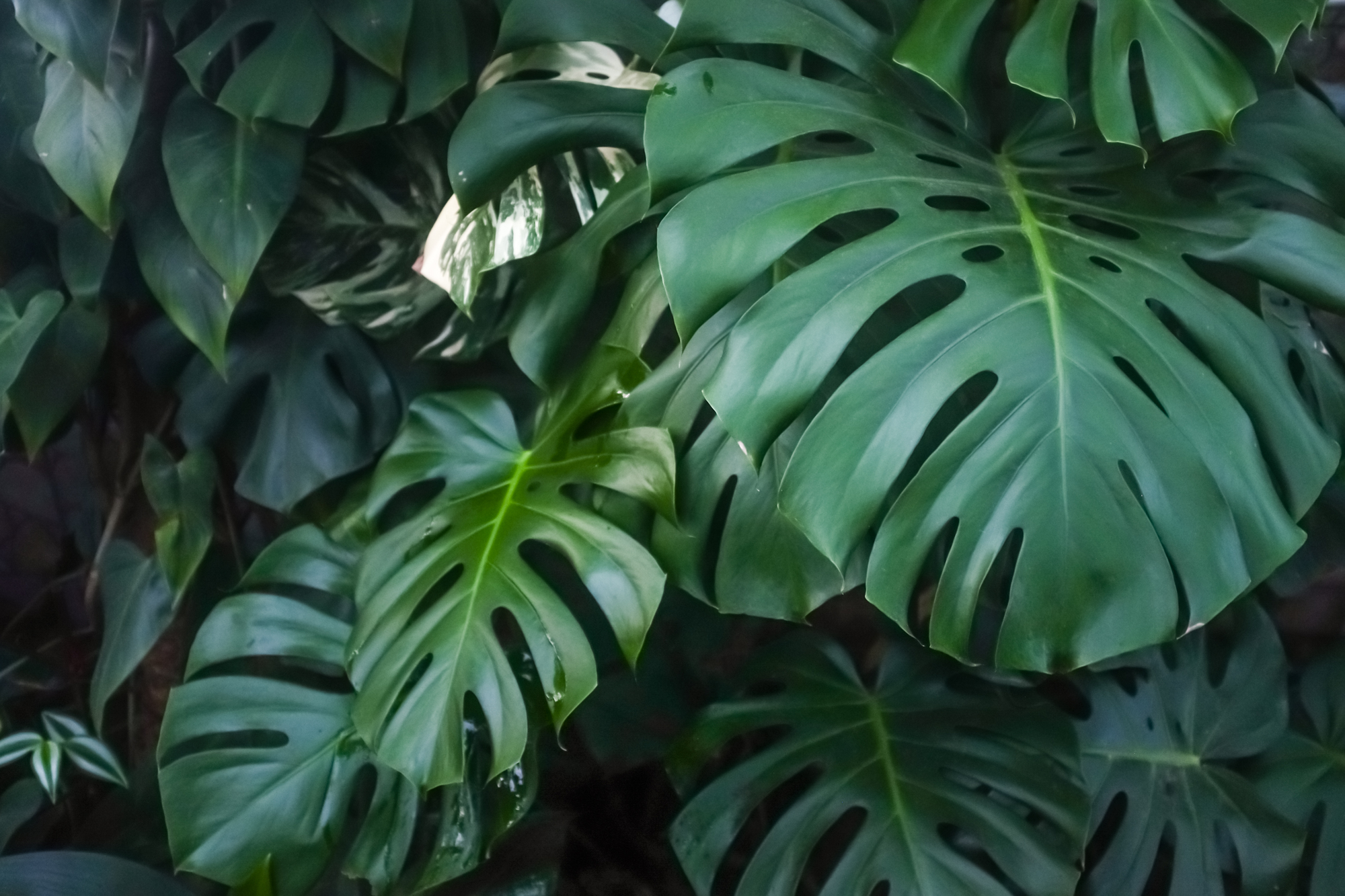Winter can present challenges for gardeners and plant enthusiasts, as the cooler temperatures and reduced sunlight hours can affect plant growth and vitality. Indoor plants, however, provide a viable solution to this seasonal dilemma, offering the opportunity to maintain greenery within the home even when outdoor conditions are less than favourable. They add a touch of nature to the living space and also have the potential to improve air quality and boost mood during the darker months.
Selecting the right plants for an indoor environment is a key consideration during winter. Some species are particularly well-suited to thrive indoors during the cold season, requiring less sunlight and water than their summertime counterparts. These plants can adapt to the warm, often dry conditions of a heated home and continue to grow, bringing life and colour to indoor spaces at a time when the outdoor landscape can be somewhat barren.
1) Spider Plant
The Spider Plant, known scientifically as Chlorophytum comosum, is a popular choice for indoor foliage during the winter months. They are cherished for their resilience and adaptability to less than ideal indoor environments. Spider Plants prefer well-drained soil and thrive with indirect sunlight, making them suitable for interior spaces with limited natural light.
These plants have a remarkable ability to purify the air, removing common household toxins and improving indoor air quality. Additionally, the Spider Plant is non-toxic, which is an important consideration for households with pets or children.
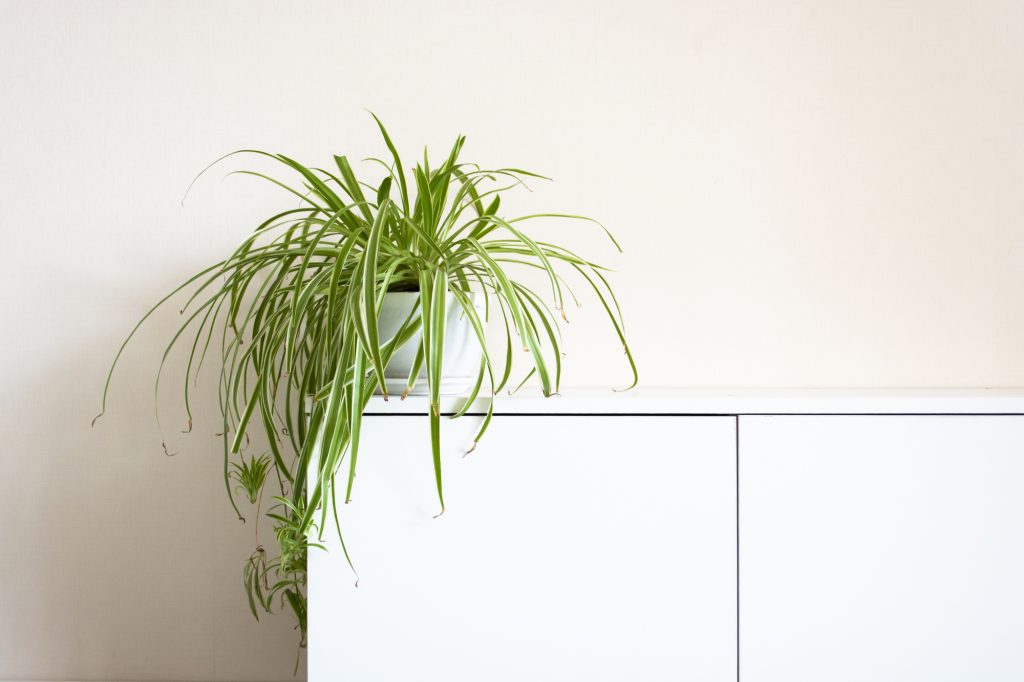
Typically, a Spider Plant requires watering about once a week, but it’s important to allow the soil to dry out between waterings to prevent root rot. During the winter, when indoor heating can create a dry atmosphere, the edges of their leaves may brown slightly, but this can often be remedied by increasing humidity around the plant.
Additionally, Spider Plants are known for their unique reproductive feature. They produce small offsets, commonly referred to as “babies” or “pups”, which can be easily propagated to grow new plants. This makes them quite rewarding for indoor gardeners looking to expand their collection or share with friends.
2) Peace Lily
The Peace Lily, or Spathiphyllum, is a popular choice for indoor foliage, particularly in the colder months. Renowned for its ability to thrive in lower light conditions, this plant is well-suited to indoor environments, making it a practical option during winter when sunlight is limited. The glossy green leaves add a touch of vibrancy to any room, and the occasional white blooms provide a simple yet attractive focal point.
Care for the Peace Lily is relatively straightforward. The plant prefers moist soil, yet it is important not to over-water, as this can lead to root rot. Watering should be done when the top inch of soil feels dry to the touch. Regular misting helps in maintaining the humidity levels that the Peace Lily enjoys, which also mirrors the conditions it would experience in its natural tropical habitat.
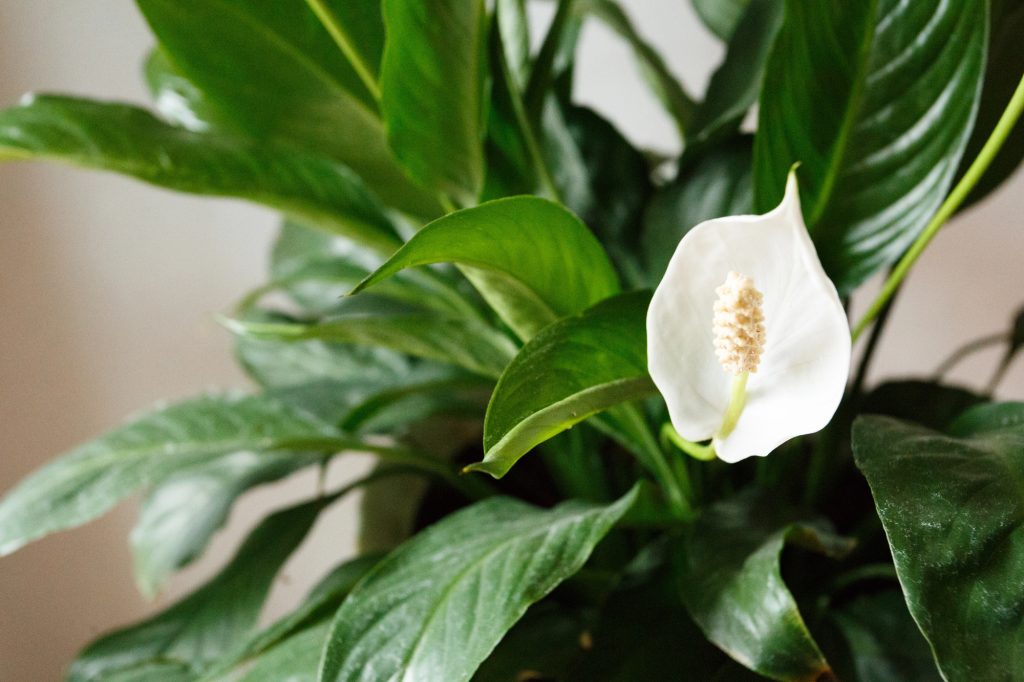
One of the distinguishing features of the Peace Lily is its ability to purify air. It has been identified by NASA studies as effective in removing common household toxins from the air, such as benzene, formaldehyde, and trichloroethylene. This characteristic makes it not just a decorative, but also a functional addition to the home.
The Peace Lily is also relatively hardy, withstanding occasional neglect, and can recover well from under-watering. They do, however, present a toxicity risk to pets if ingested, so they should be placed out of reach of cats and dogs. With these simple care guidelines, the Peace Lily remains a steadfast favourite for bringing life to indoor spaces during the stark winter months.
Also See: How Should I Take Care Of A Peace Lily? Essential Tips For Plant Health
3) Aloe Vera
Aloe Vera is an advantageous indoor plant, particularly during the winter months when indoor heating can result in a drier atmosphere. This succulent requires minimal maintenance, thriving in indirect sunlight and requiring infrequent watering. Ideal for busy individuals or those new to plant care, Aloe Vera tolerates neglect rather well.
The plant is well known for its thick, fleshy leaves filled with a gel that is widely used for its soothing properties on skin. It’s a practical addition to any home, offering both aesthetic appeal and functional use. Aloe Vera also contributes to improving air quality by emitting oxygen and absorbing carbon dioxide at night.
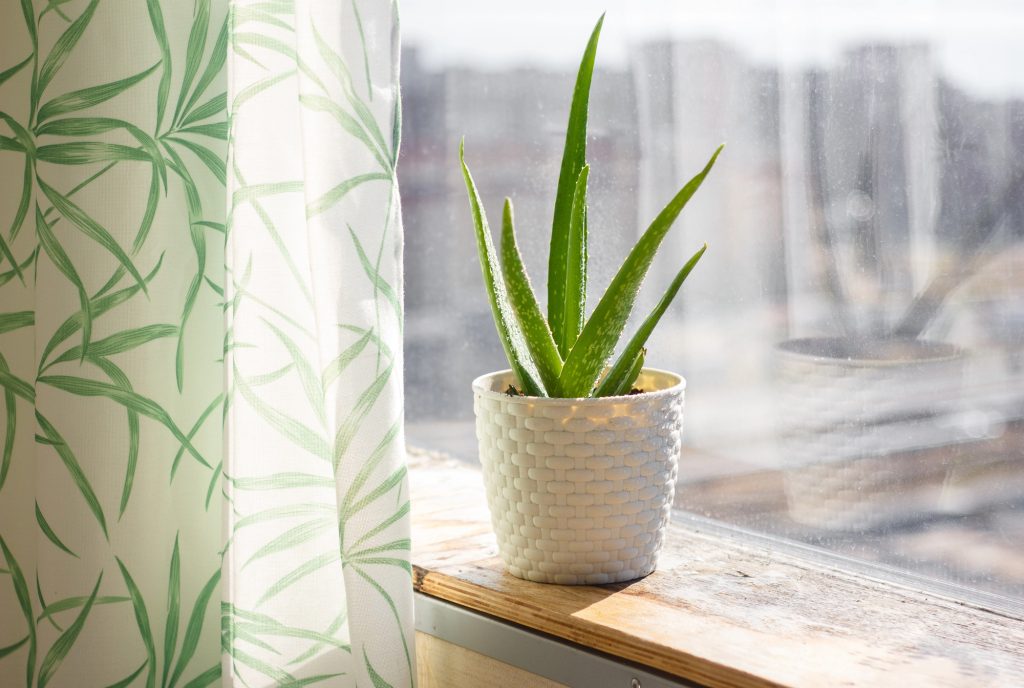
When nurturing Aloe Vera indoors, ensure the use of well-draining soil and a pot with adequate drainage holes to prevent water from accumulating, which can cause root rot. Watering should be done sparingly—only when the top few centimetres of soil are dry to the touch. Overwatering can be detrimental to the plant’s health.
Being native to arid regions, Aloe Vera is well-suited to indoor environments in the winter, as it is resistant to the lower humidity levels that can accompany the colder months. It’s a hardy option for those seeking to add some greenery to their indoor space during winter.
4) English Ivy
English Ivy, or Hedera helix, is a popular choice for those seeking resilient indoor foliage during the colder months. This evergreen climbing plant is known for its ability to thrive in lower temperatures and with limited sunlight, making it a suitable option for winter.
It possesses dark green, glossy leaves that can provide a touch of nature to any interior setting. English Ivy is adept at purifying the air, as it absorbs toxins such as formaldehyde, making it not only decorative but also beneficial for indoor air quality.
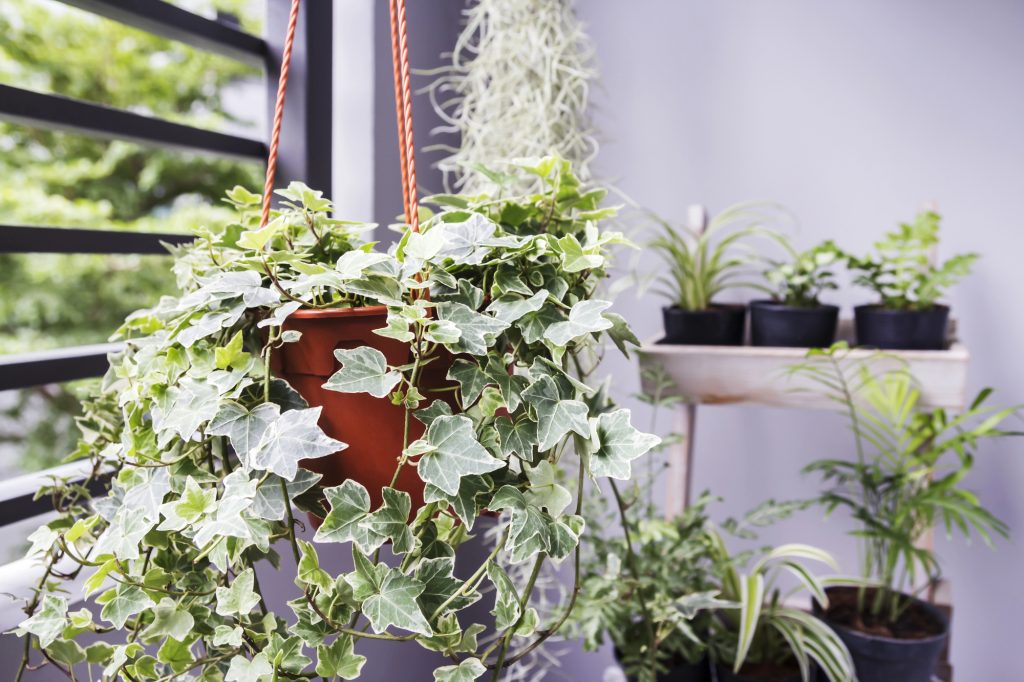
Caring for English Ivy involves keeping the soil moist, but it’s important to avoid overwatering which can lead to root rot. The plant prefers cool room temperatures and can be positioned in indirect light or areas with less natural light, which is typical in winter months.
Regular pruning can encourage fuller growth and prevent the plant from becoming too leggy. While English Ivy is hardy, attention should be given to prevent the spread of pests such as spider mites, which can be managed with a regular misting of water or the use of insecticidal soap.
5) Swiss Cheese Plant
The Swiss Cheese Plant, or Monstera deliciosa, is a popular choice for bringing a touch of the tropics into the home during the winter months. Characterised by its large, glossy green leaves with natural holes, this plant is both attractive and easy to care for in indoor settings.
These plants prefer a warm environment with indirect sunlight. It’s essential to keep them away from cold draughts and maintain a consistent temperature. A regular watering schedule is key, allowing the soil to dry out slightly between waterings. Over-watering can harm the plant, causing root rot and other issues.
Feeding the Swiss Cheese Plant with a balanced fertiliser during the growing season supports healthy growth. They tend to grow quite large, so space is an important consideration. Pruning can manage the size and encourage more bushy growth.
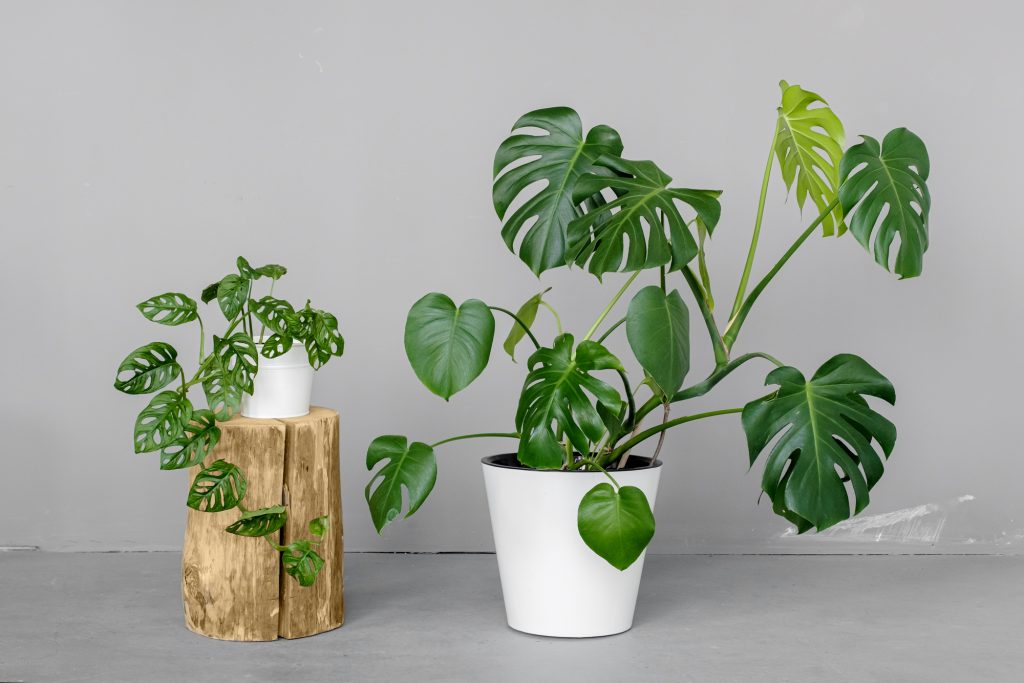
In terms of common issues, the Swiss Cheese Plant can suffer from leaf yellowing if over-watered or placed in low light conditions for extended periods. It’s also worth noting that the leaves can be toxic if ingested, so it’s best to keep them away from pets and small children.
With proper care, this plant can serve as a striking addition to an indoor winter garden, bringing life and a splash of green to the indoors during the colder, darker months.
6) Rubber Plant
The Rubber Plant, or Ficus elastica, is well-suited to indoor conditions during the winter months. With its broad, dark green leaves, it absorbs low light levels—something of a necessity during shorter days. This species is native to tropical regions of India and Malaysia, which means it prefers humid conditions. In a typical home, this can be replicated by placing the plant near a humidifier or regularly misting its leaves.
Rubber Plants grow well in potting soil that drains easily and in pots that allow excess water to escape, preventing root rot. They benefit from a consistent watering schedule, allowing the soil to dry out slightly between waterings. Overwatering can lead to dropped leaves—a common issue to be mindful of during the winter when plant metabolism slows.
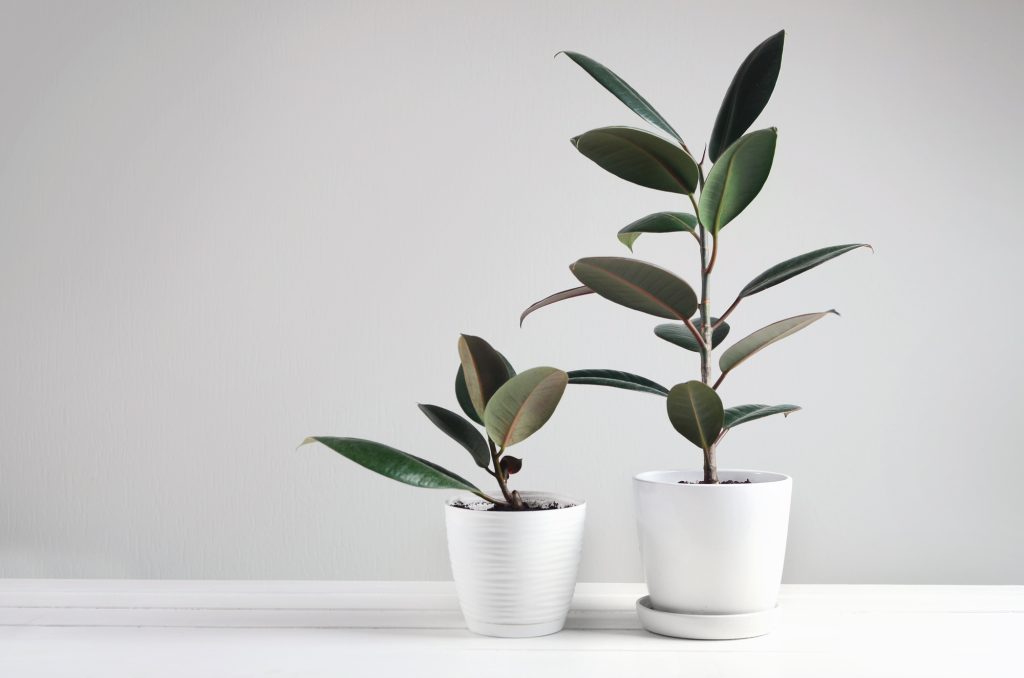
This plant doubles as a natural air purifier, removing toxins such as formaldehyde from indoor environments. It can grow anywhere from two to ten feet tall indoors, depending on how much it is pruned. Supportive staking may become necessary as the plant increases in height and weight.
Its resilience and low maintenance make the Rubber Plant a fitting choice for those seeking greenery during the chillier months. Regular cleaning of the leaves is recommended to maintain photosynthesis efficiency, as dust can accumulate and impede light absorption.
7) Boston Fern
The Boston Fern, or Nephrolepis exaltata ‘Bostoniensis’, is a popular houseplant known for its lush, feathery fronds. Originating from tropical regions, this plant thrives in the warmer, humid conditions found in many homes during winter months. It’s a suited choice for indoor environments due to its preference for indirect light and capacity to remove pollutants from the air.
Caring for a Boston Fern involves keeping the soil consistently moist without leaving the plant waterlogged. Misting the fronds can be beneficial, especially in dry conditions, which are common in heated indoor spaces in winter. Ensuring a high humidity level will prevent the fronds from drying out and turning brown.
When it comes to feeding, a balanced liquid fertiliser applied monthly during the growing season will suffice. However, during winter, it’s advisable to reduce feeding as plant growth typically slows.
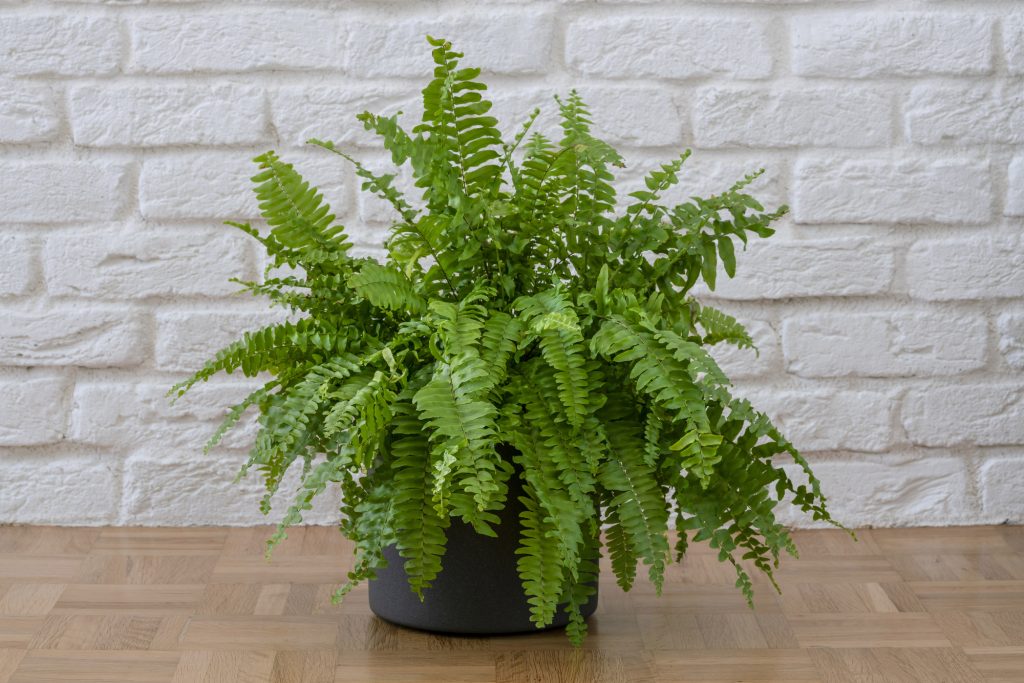
Boston Ferns can grow to a considerable size. Regular trimming will help maintain its shape and encourage new growth. Repotting should be done every couple of years or once the plant outgrows its current pot, which is an ideal time to divide the fern if necessary.
This plant’s ability to adapt to indoor conditions makes it not only a decorative addition but also a contributor to a healthier living space. The Boston Fern is a reliable choice for those seeking greenery during the colder months.
8) Jade Plant
The jade plant, known scientifically as Crassula ovata, is a popular succulent houseplant with fleshy oval leaves and woody stems that resemble tree trunks. Due to its durability and ability to thrive in indoor conditions, it’s favoured for adding a touch of greenery during the colder months. Native to South Africa, the jade plant requires minimal watering, making it an excellent option for individuals who seek a low-maintenance indoor plant.
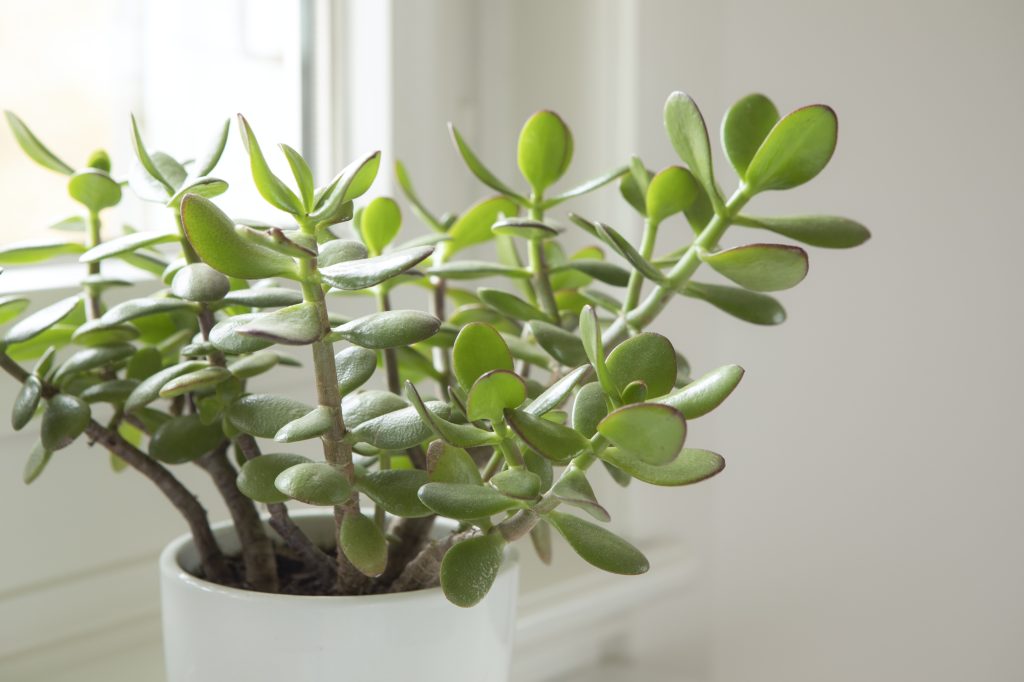
This plant prefers bright, indirect sunlight and room temperatures between 18°C to 24°C, which aligns well with typical indoor environments in winter. While the jade plant tolerates lower light levels, insufficient light may cause it to become leggy as it stretches towards the light source. Regular pruning can help maintain its compact, bushy appearance. Overwatering is a common issue; hence, it is essential to let the soil dry out completely between waterings.
The slow growth rate of the jade plant makes it an ideal indoor plant that won’t outgrow its space quickly. Repotting is seldom needed, usually only every two to three years. With proper care, it can last for many years, even decades, and is often passed down through generations as a cherished houseplant.
9) Chinese Evergreen
Chinese Evergreen, or Aglaonema, is a popular choice for indoor foliage, especially during the colder months. Its ability to thrive in low-light conditions makes it suitable for indoor environments where sunshine is limited in winter. They prefer temperatures above 16°C and can therefore adapt well to typical indoor heating arrangements during this season.
The leaves of the Chinese Evergreen are its most striking feature. Variegated with shades of green, silver, and sometimes red, the plant adds a touch of elegance to any room. It is also acknowledged for its air-purifying qualities, as it can remove toxins from the air, contributing to a healthier indoor atmosphere.
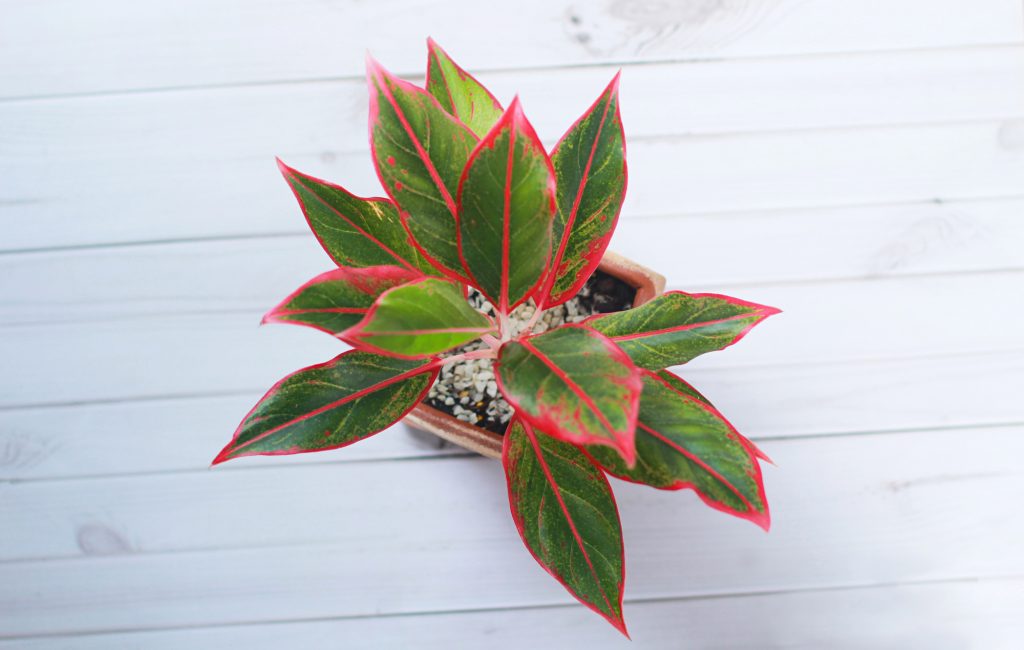
Caring for this plant involves minimal effort. It requires watering only when the topsoil feels dry, reducing the risk of overwatering. Its repotting needs are infrequent, only necessary when it outgrows its container. Due to its resilience and low maintenance, the Chinese Evergreen is a suitable plant choice for both seasoned gardeners and those new to plant care.
For optimal growth, it is advised to feed the Chinese Evergreen with a balanced, water-soluble fertilizer periodically, following the instructions for dilution and frequency. Ensuring the plant is not exposed to drafts and sudden temperature changes will keep it in good health, making it a dependable companion throughout the winter season.
10) Areca Palm
The Areca Palm, or Dypsis lutescens, thrives in the indoor environment due to its preference for indirect light and its ability to enhance humidity. Originating from Madagascar, this plant has gained popularity in cooler climates. Its care is relatively straightforward, requiring a well-draining soil mix and consistent moisture without waterlogging.
During the winter months, the Areca Palm can help purify the air inside homes. It’s effective in removing common toxins, contributing to a healthier living space. The plant prefers temperatures between 16°C to 24°C, which aligns with typical indoor settings. It is, however, susceptible to colder drafts and should be kept away from cold windows or doors.

For optimal growth, the Areca Palm should be fed with a balanced fertiliser during the growing season, which slows in winter. Pruning is minimal, focused primarily on removing any yellowing leaves to encourage new growth. Attention to these details makes the Areca Palm a favourable option for enhancing interiors with greenery during the colder months.
Choosing The Right Indoor Plants
Selecting appropriate indoor plants for the winter involves understanding their specific light needs and how they respond to indoor humidity and temperature levels.
Factors To Consider
When choosing indoor plants for winter, it’s essential to assess several aspects to ensure they thrive. The size of the plant should match the available space, and growth habits are important, as some plants might require regular pruning. It’s vital to consider the toxicity of plants, especially if children or pets are present. Maintenance levels vary among species, with some requiring frequent care and others being more low-maintenance.
Light Requirements
Low Light Conditions: Plants like the snake plant (Sansevieria) and peace lily (Spathiphyllum) are excellent for areas with minimal light.
- Moderate Light: Spider plant (Chlorophytum comosum) and pothos (Epipremnum aureum) do well in medium light.
- Bright Light: Succulents and cacti require bright, direct light to flourish.
The light intensity that plants receive has a profound effect on their health, dictating their water needs, growth rate, and flowering capability.
Humidity and Temperature Needs
Humidity Preferences:
- Low Humidity: Cast iron plant (Aspidistra elatior)
- High Humidity: Ferns such as the Boston fern (Nephrolepis exaltata)
Temperature Preferences:
- Warmer Temperatures: Aloe vera, which prefers temperatures between 18°C and 26°C
- Cooler Temperatures: Cyclamen that can tolerate temperatures as low as 10°C
The range for most houseplants is between 15°C and 24°C with humidity levels from 40% to 60%. Heaters can reduce indoor humidity significantly, so frequent misting or use of a humidifier might be needed for some species.
Caring For Indoor Plants During Winter
Indoor plants require different care in the colder months due to factors like reduced sunlight and dryer indoor air. Adjusting watering habits and fertilisation can help ensure their health and vitality.
Watering Techniques
During winter, indoor plants often need less water. Overwatering can be harmful, leading to root rot and fungal issues.
- Check soil moisture: Wait until the top inch of soil is dry before watering.
- Reduce frequency: Water only when necessary, monitoring plant soil more than following a set schedule.
- Use tepid water: Cold water can shock the roots. Allow tap water to reach room temperature to avoid this.
Fertilising Tips
Most indoor plants will enter a dormant period in winter, resulting in slower growth and reduced fertilising needs.
- Limit fertiliser: Apply a half-strength solution compared to summer feedings, or pause fertilising altogether.
- Use the right type: Opt for a fertiliser formulated for indoor plants to provide the proper nutrients.
- Monitor plant response: Observe changes in your plants to determine whether the fertiliser amount should be adjusted.
Benefits Of Indoor Plants In Winter
Indoor plants can significantly enhance the living environment, especially during the cold months, by improving indoor air quality and adding visual appeal to interior spaces.
Improving Air Quality
Indoor air quality tends to degrade in winter due to reduced ventilation. Plants, however, can absorb harmful toxins and emit oxygen, thus refreshing the indoor air. A few examples include:
- Spider plants (Chlorophytum comosum): Known for removing carbon monoxide and xylene.
- Peace lilies (Spathiphyllum): They filter out benzene, formaldehyde, and trichloroethylene.
Common pollutants such as ammonia and benzene are found in everyday cleaning products and can be reduced with the presence of plants. A NASA study found that plants purify the air by pulling contaminants into the soil, where root zone microorganisms convert VOCs into food for the plant.
Enhancing Indoor Aesthetics
Adding plants to interior spaces can greatly enhance the visual appeal of a home or office. They bring colour and life to otherwise stark environments. The vibrancy of plants can elevate mood and contribute to a relaxing ambiance. Some varieties that brighten up interiors include:
- Poinsettias: Their vivid red leaves bring festive cheer.
- Amaryllis: Striking blooms that add a splash of colour.
Incorporating plants into interior design isn’t just about aesthetics. They can create a focal point in a room and serve as natural art. Placement of potted plants on shelves, stands, and in corners can balance the visual elements of a room, making it more inviting and pleasing to the eye.

